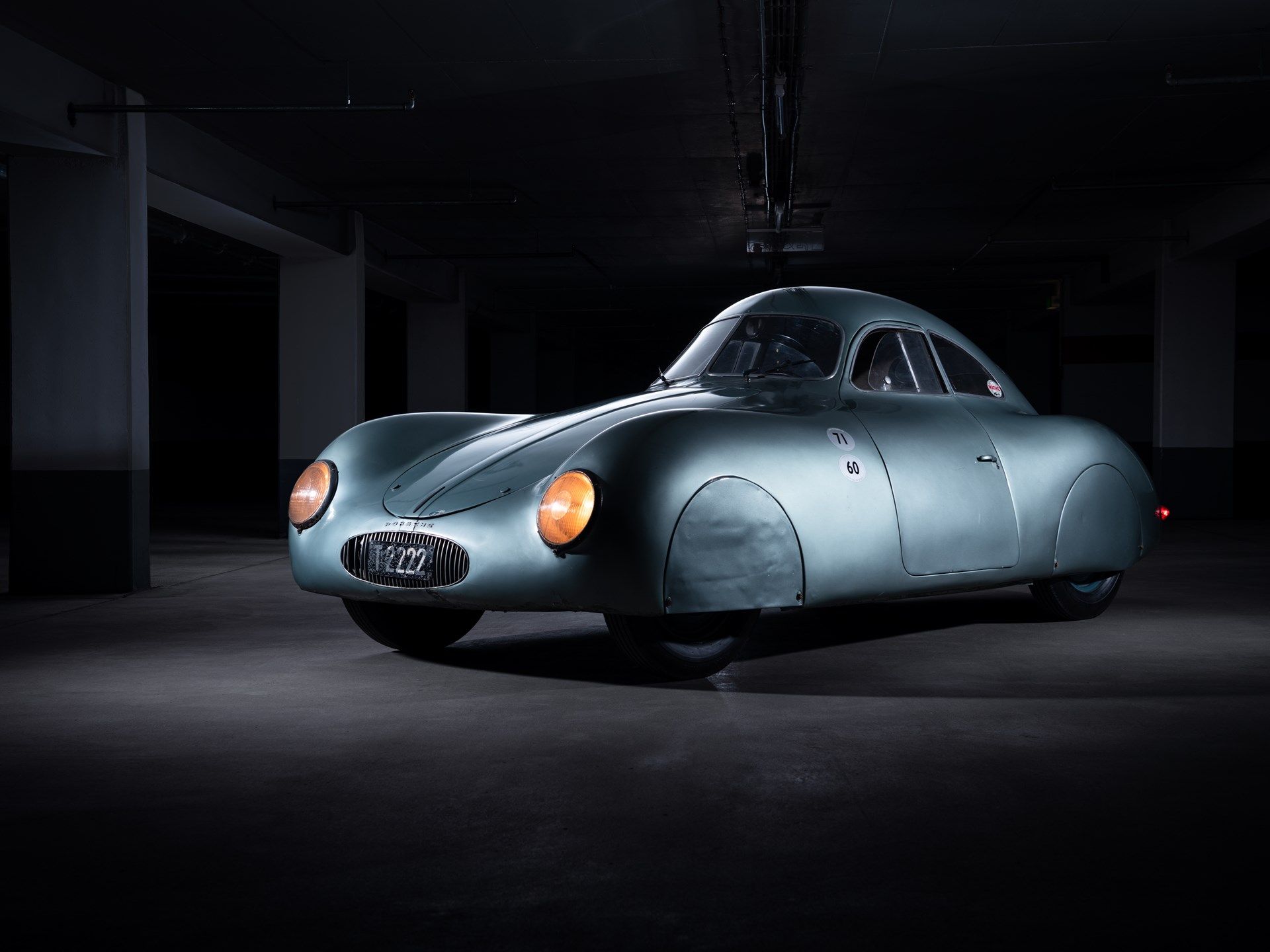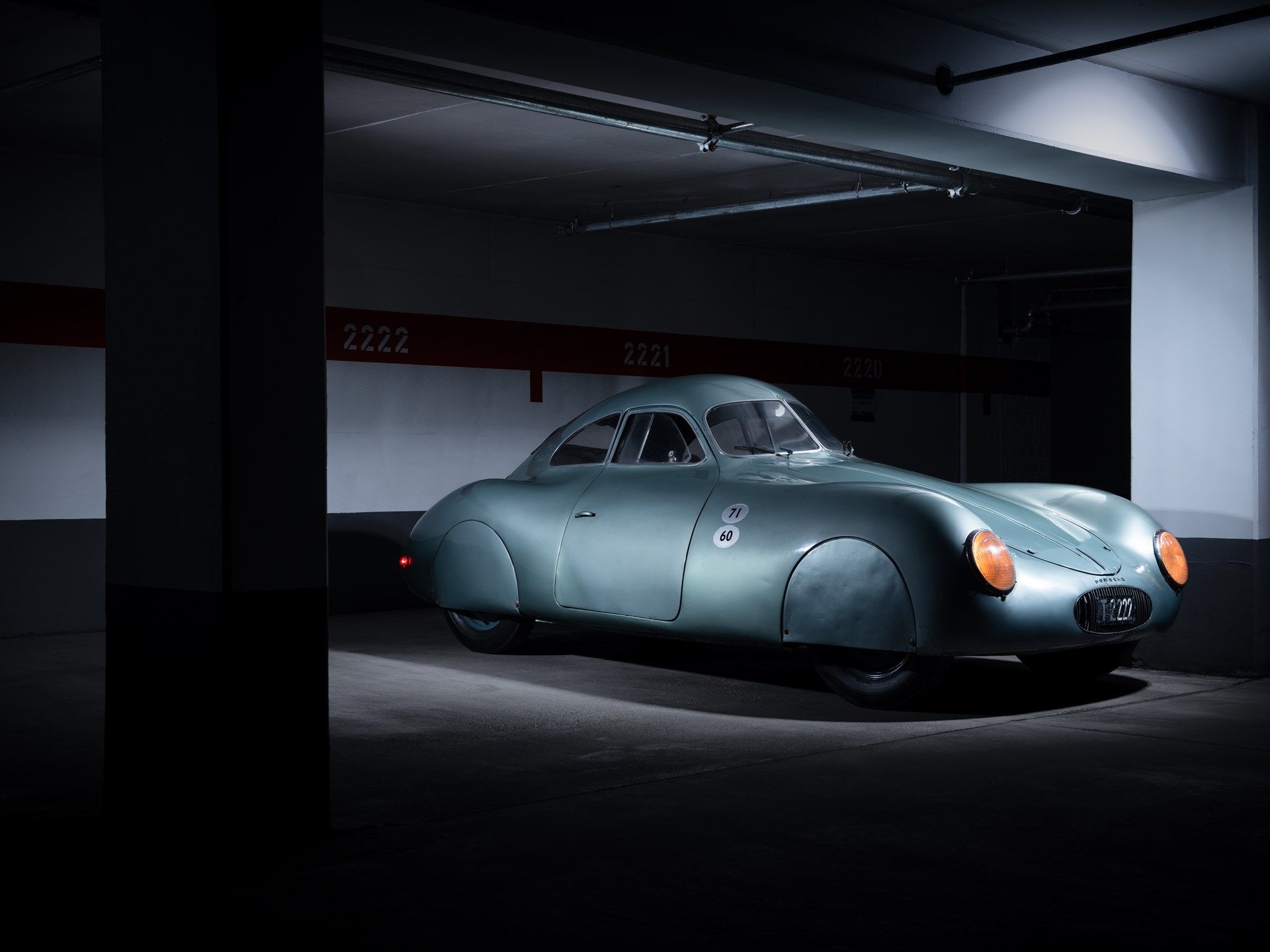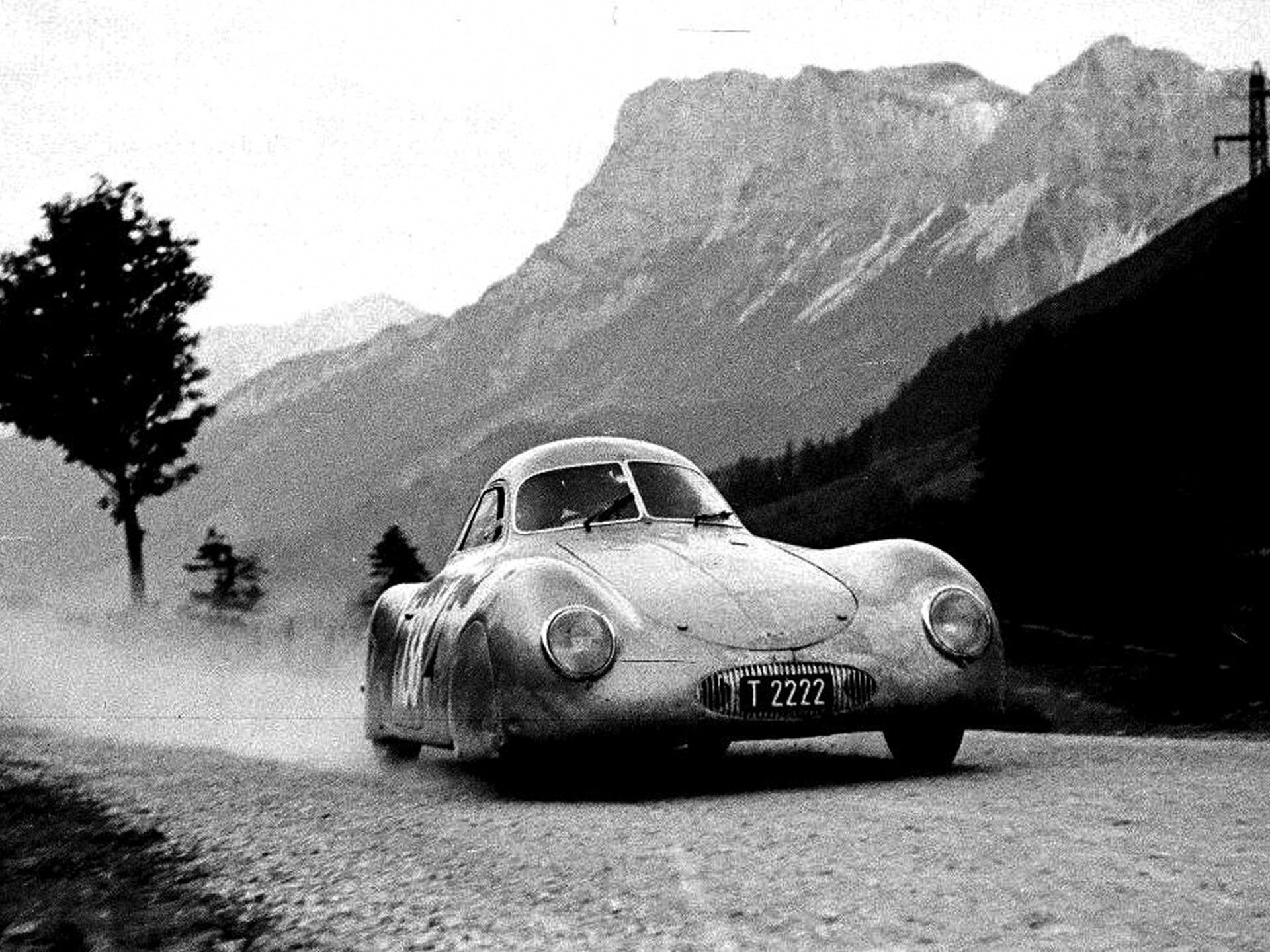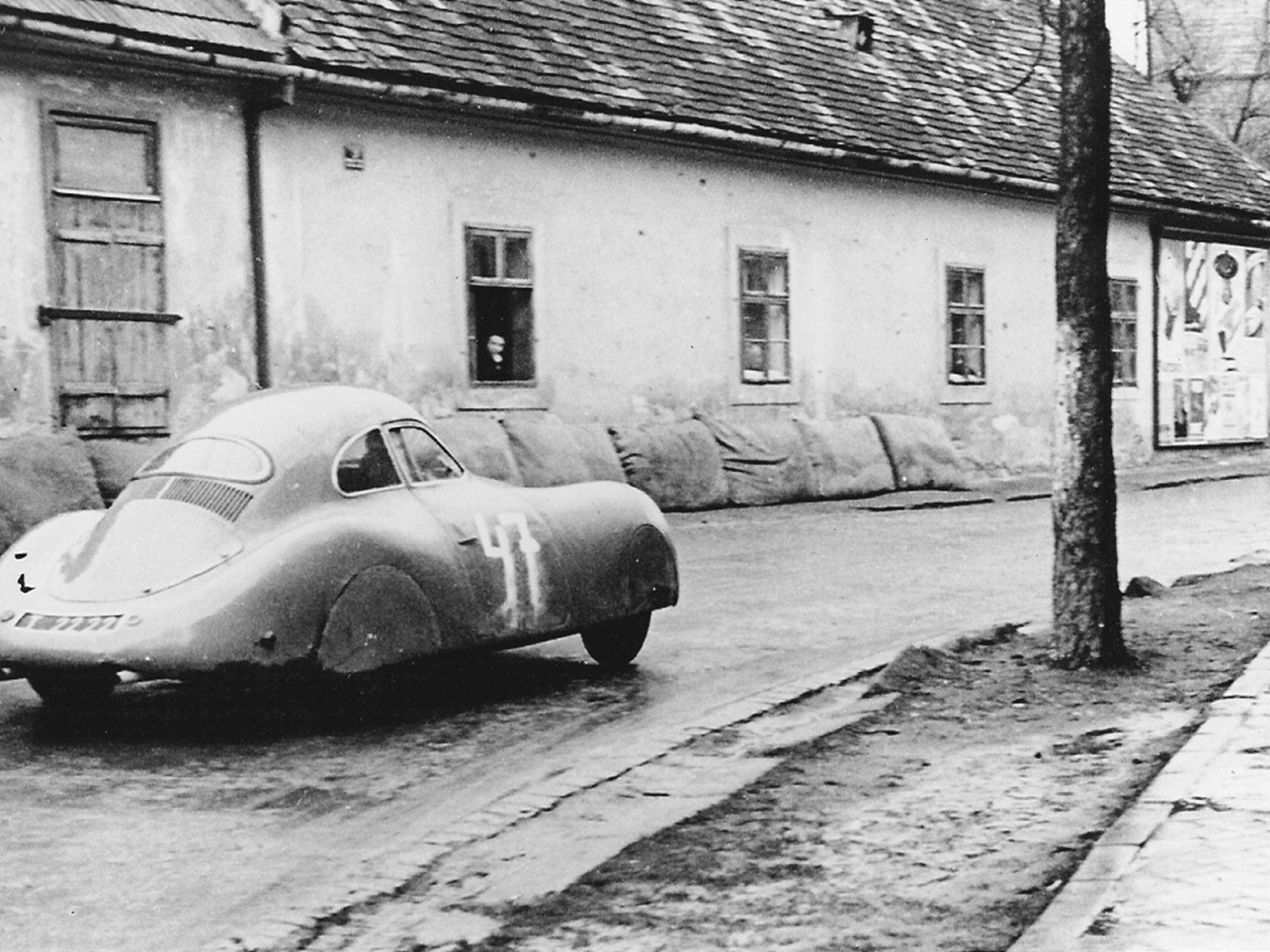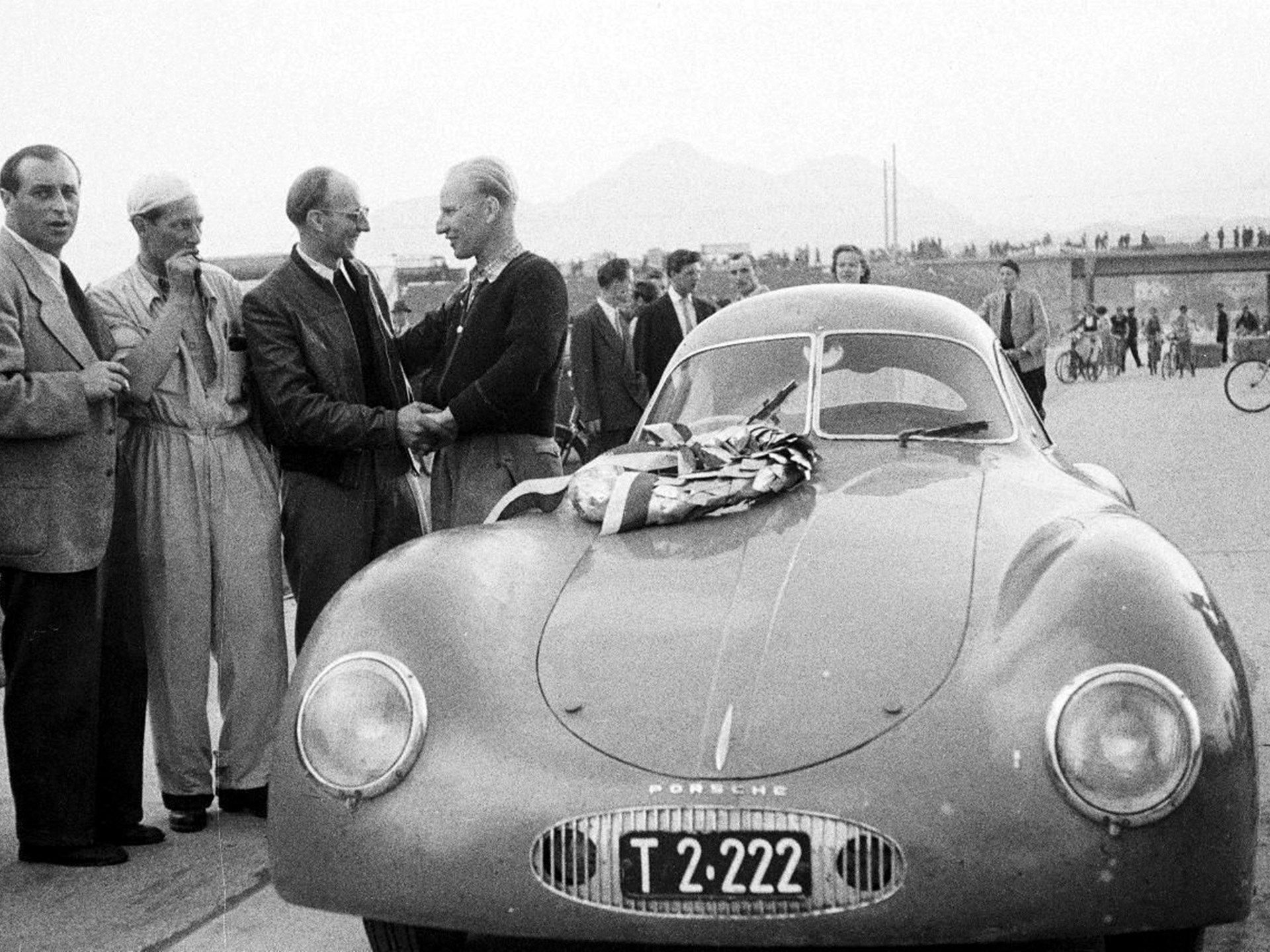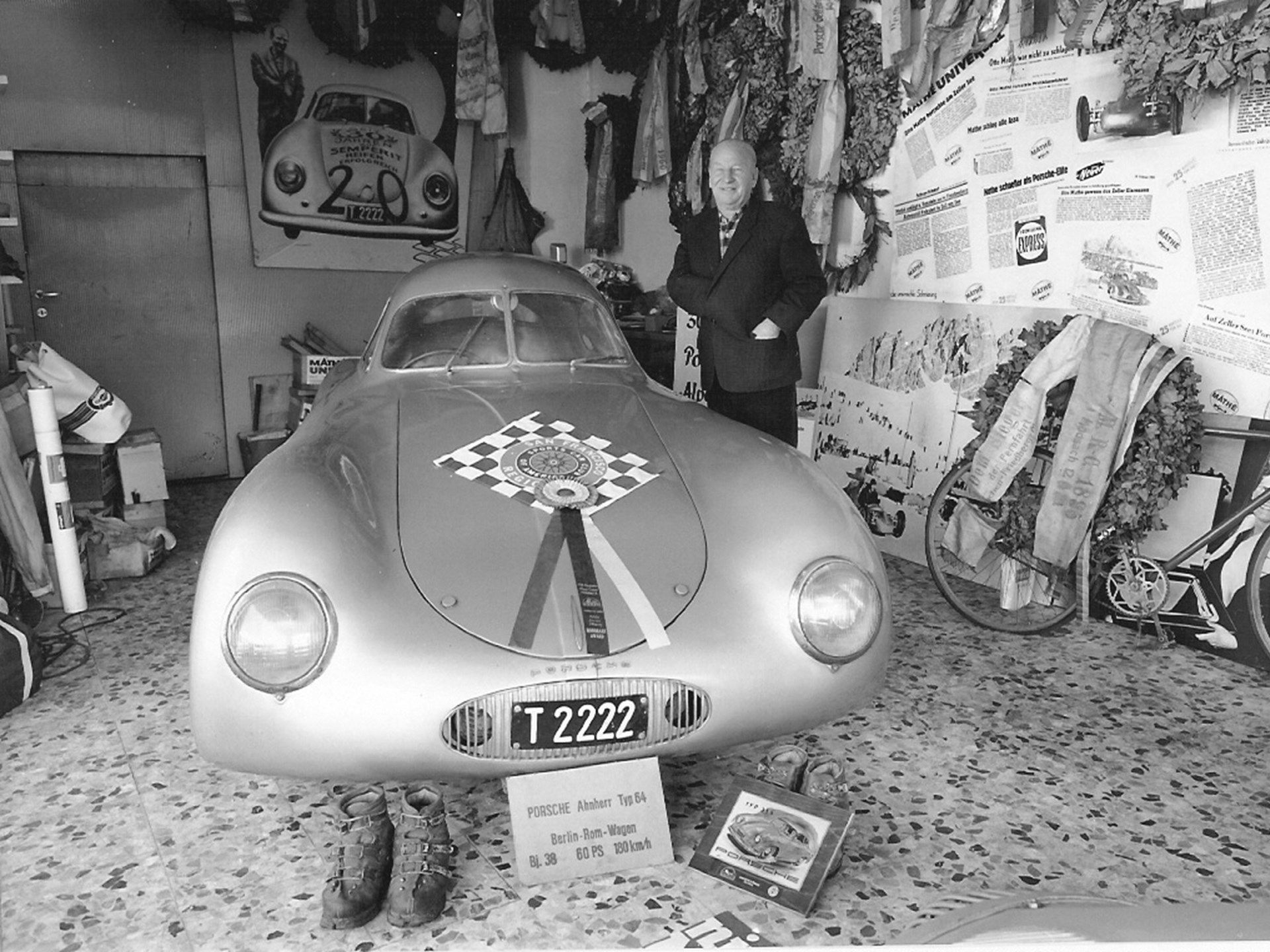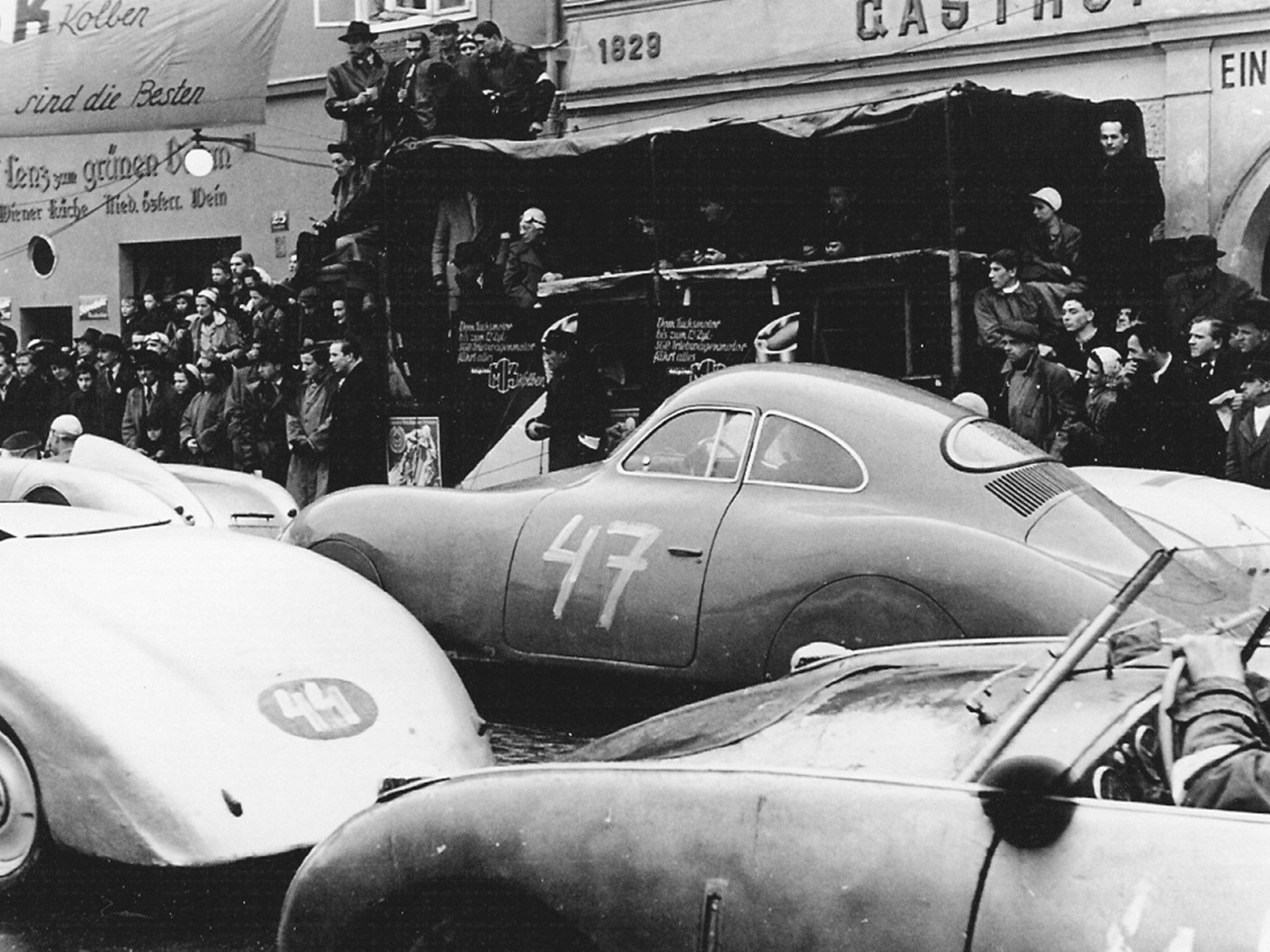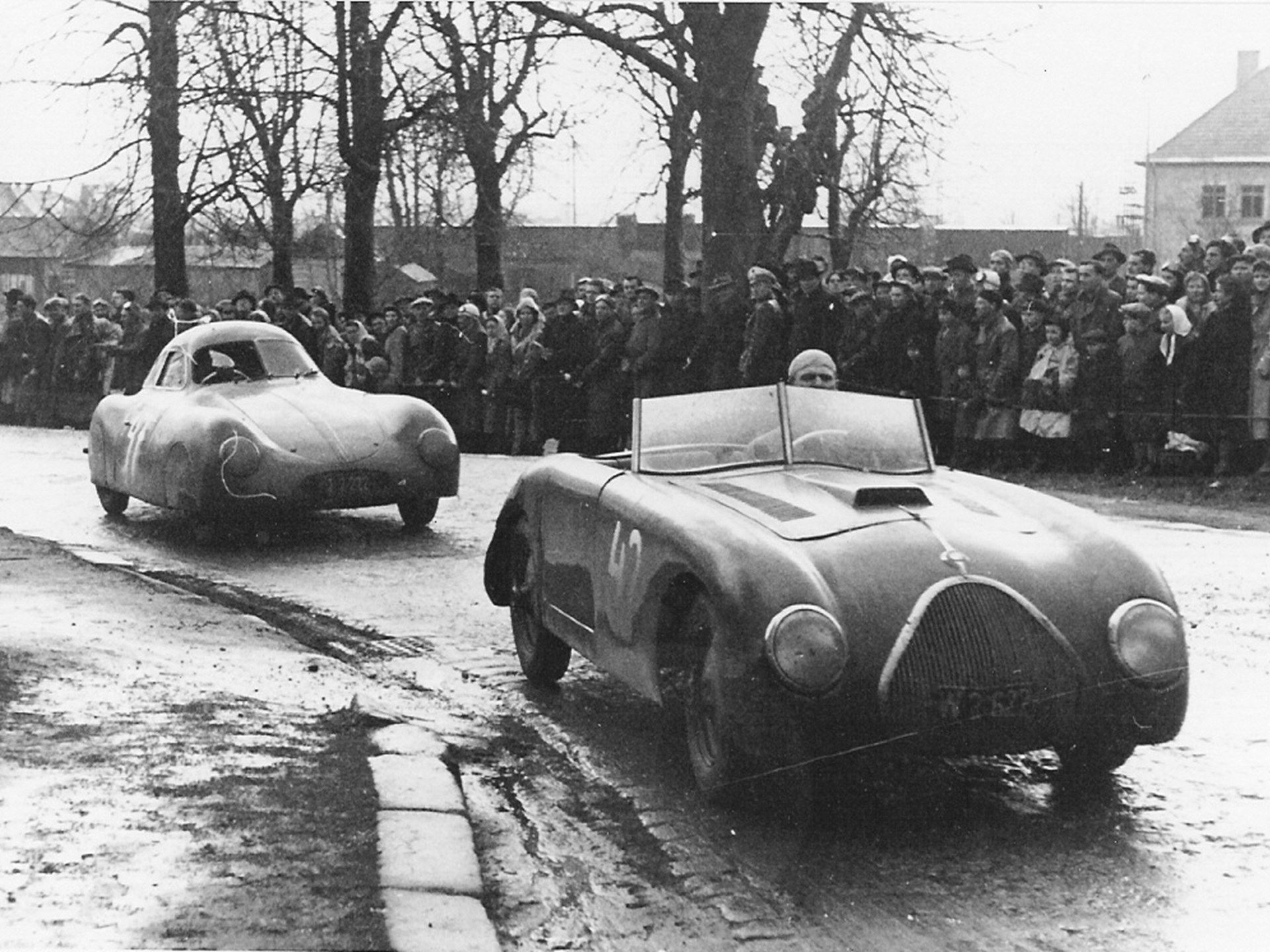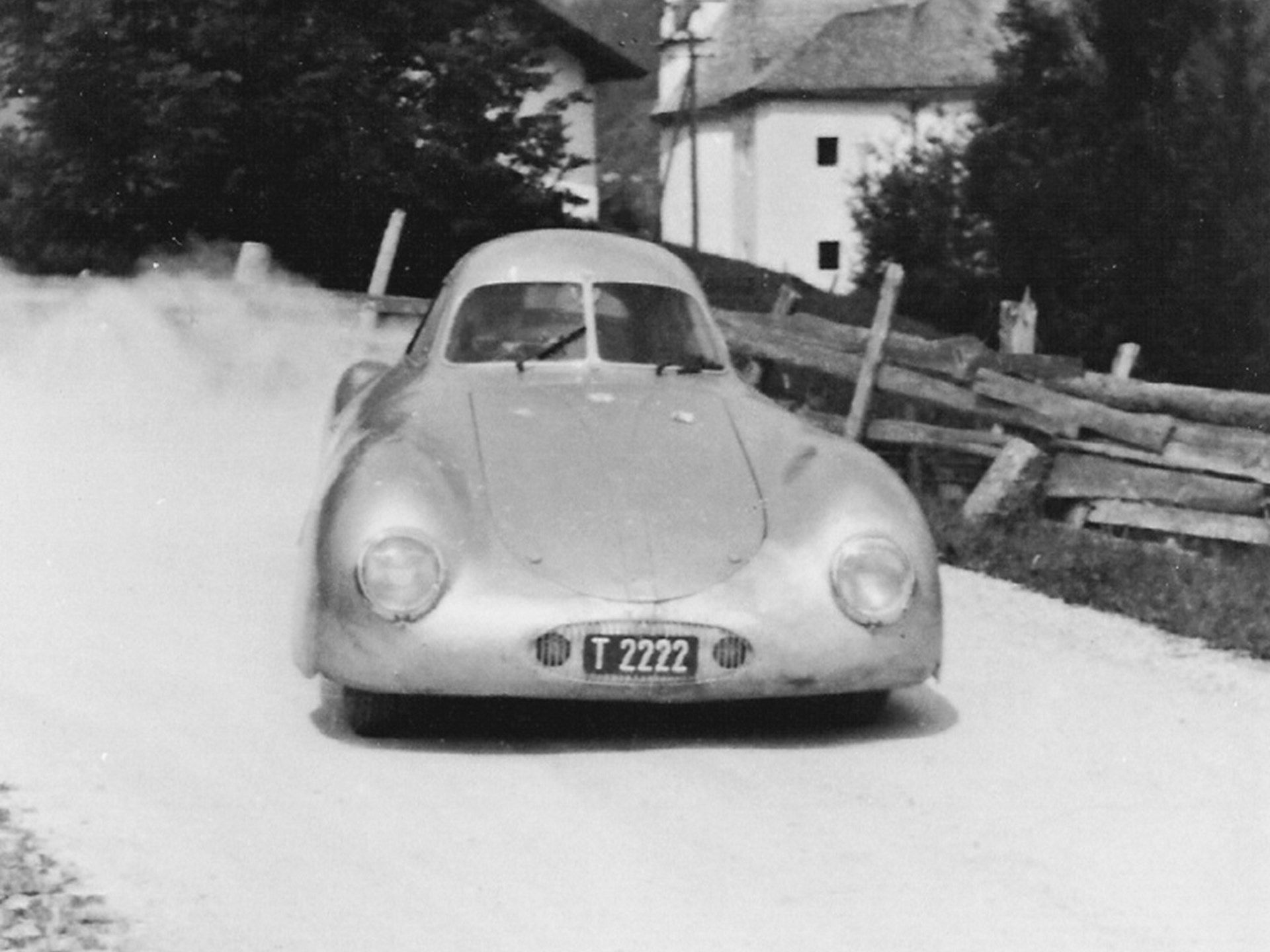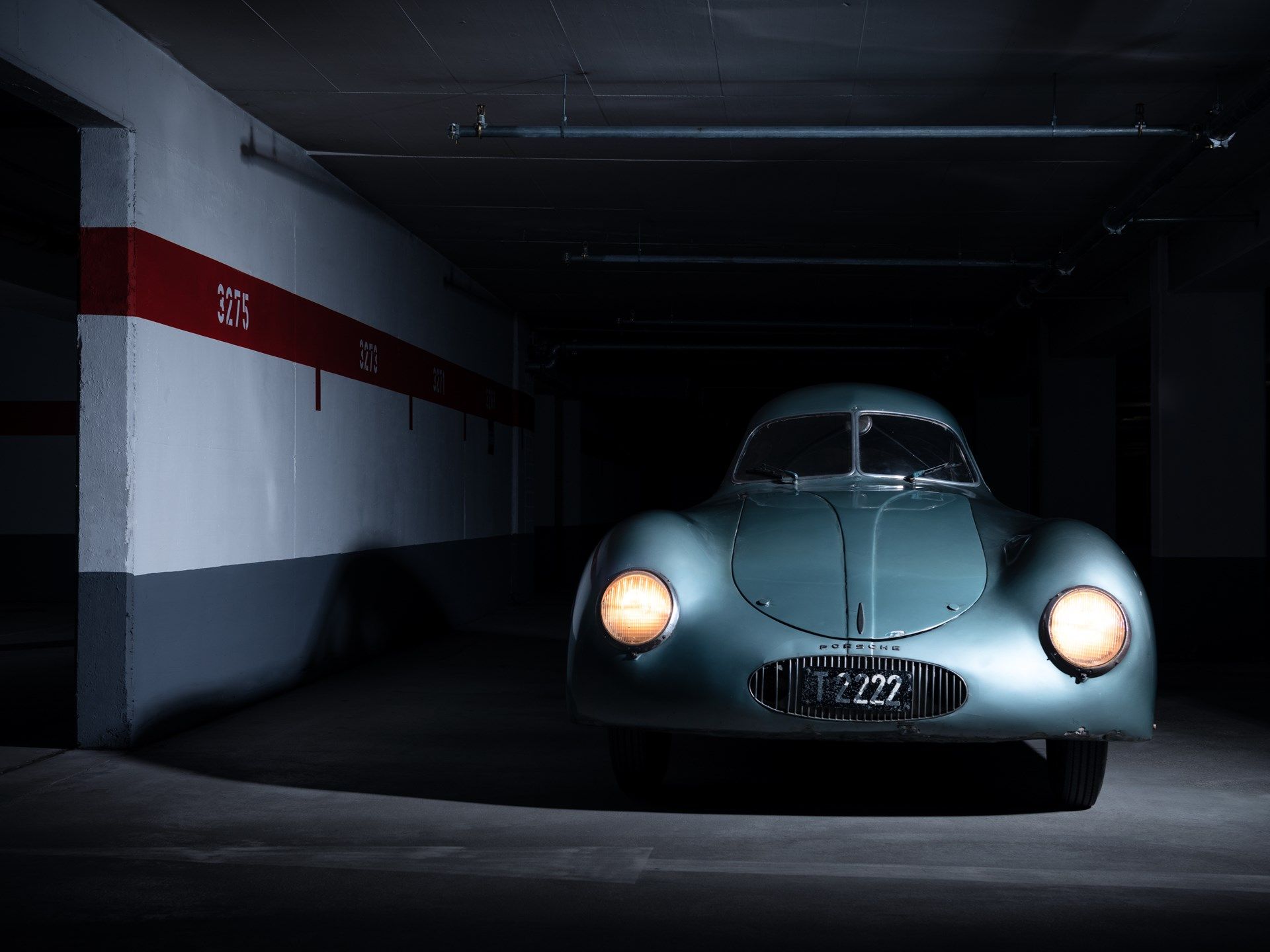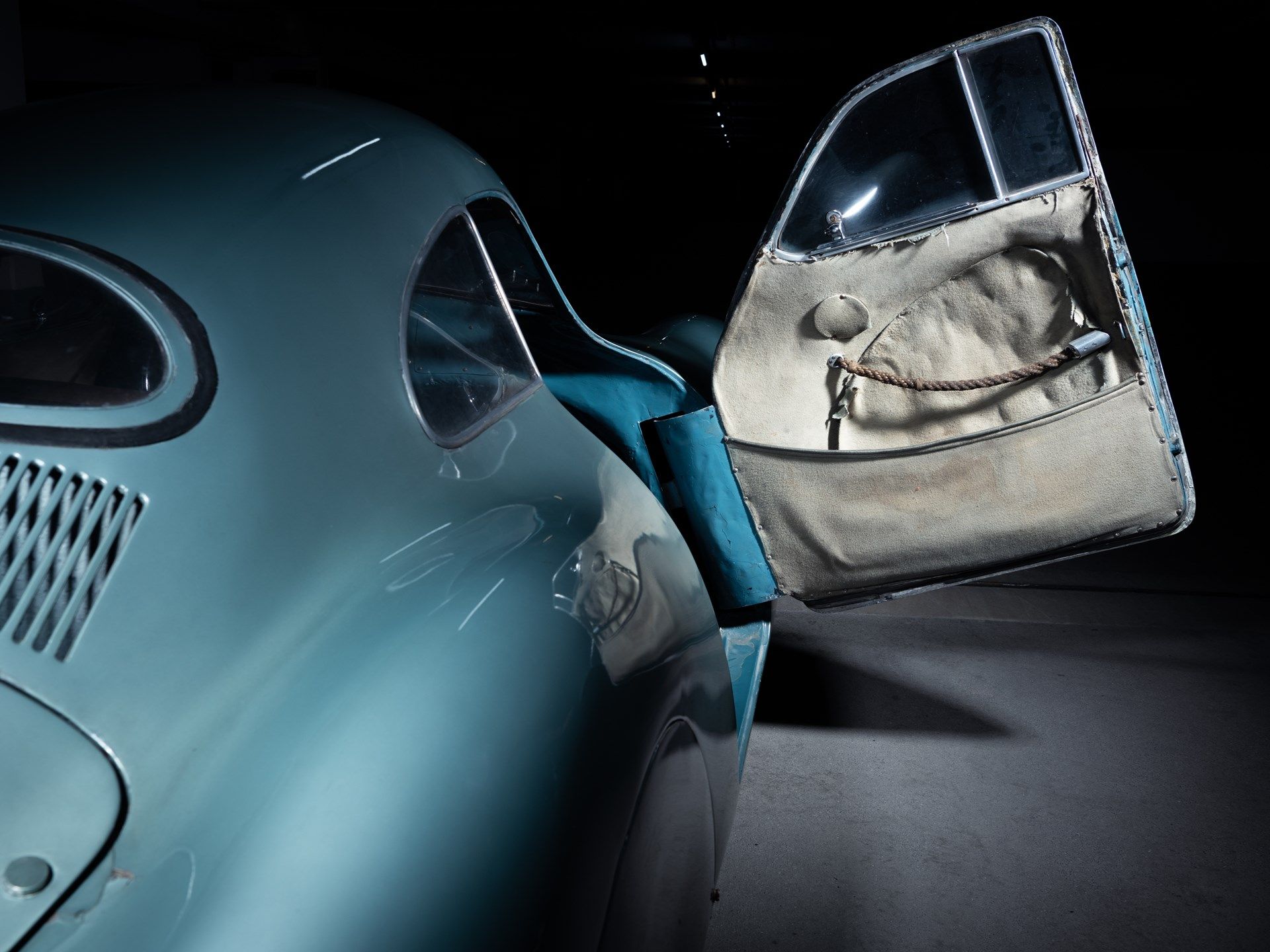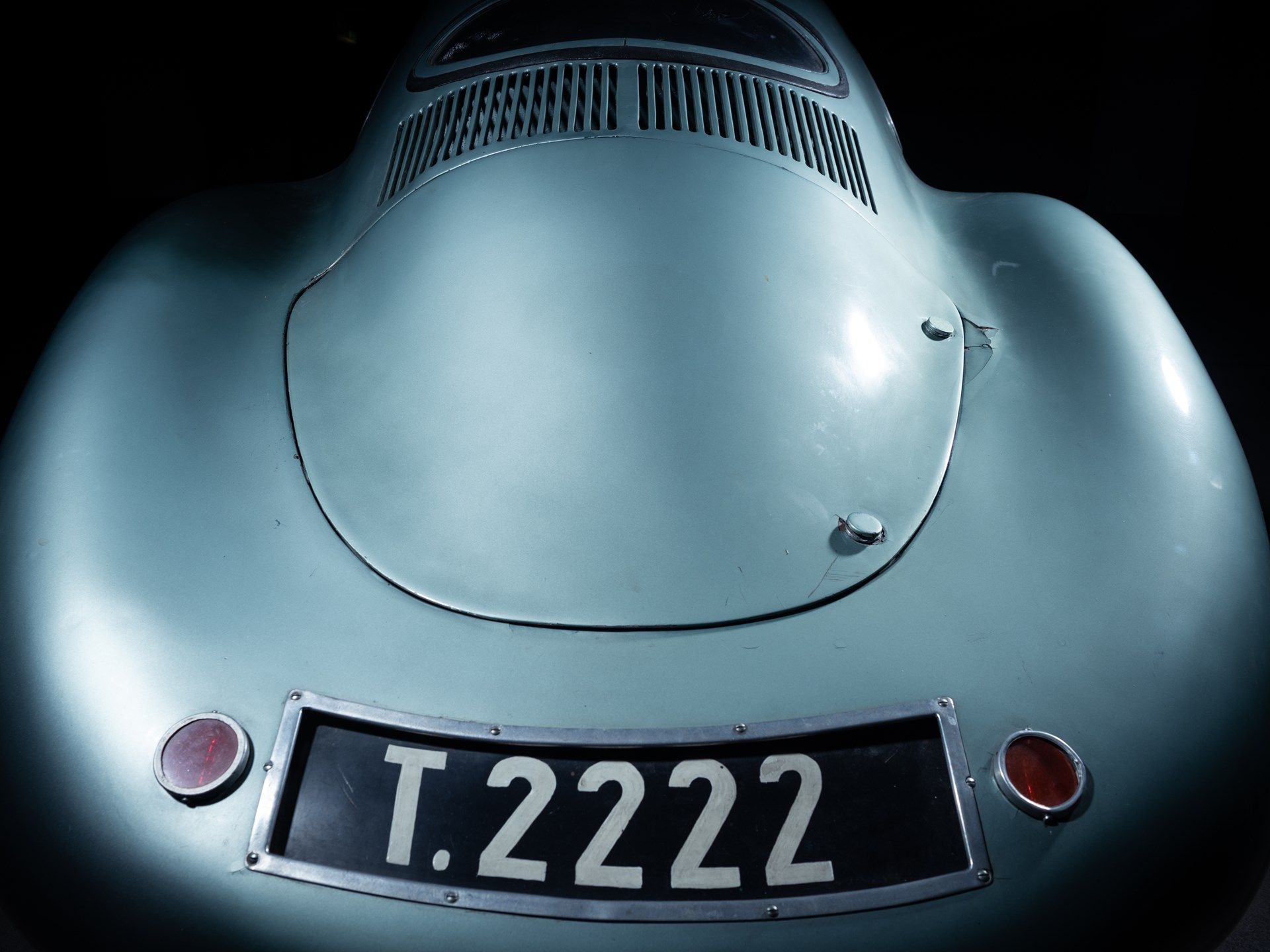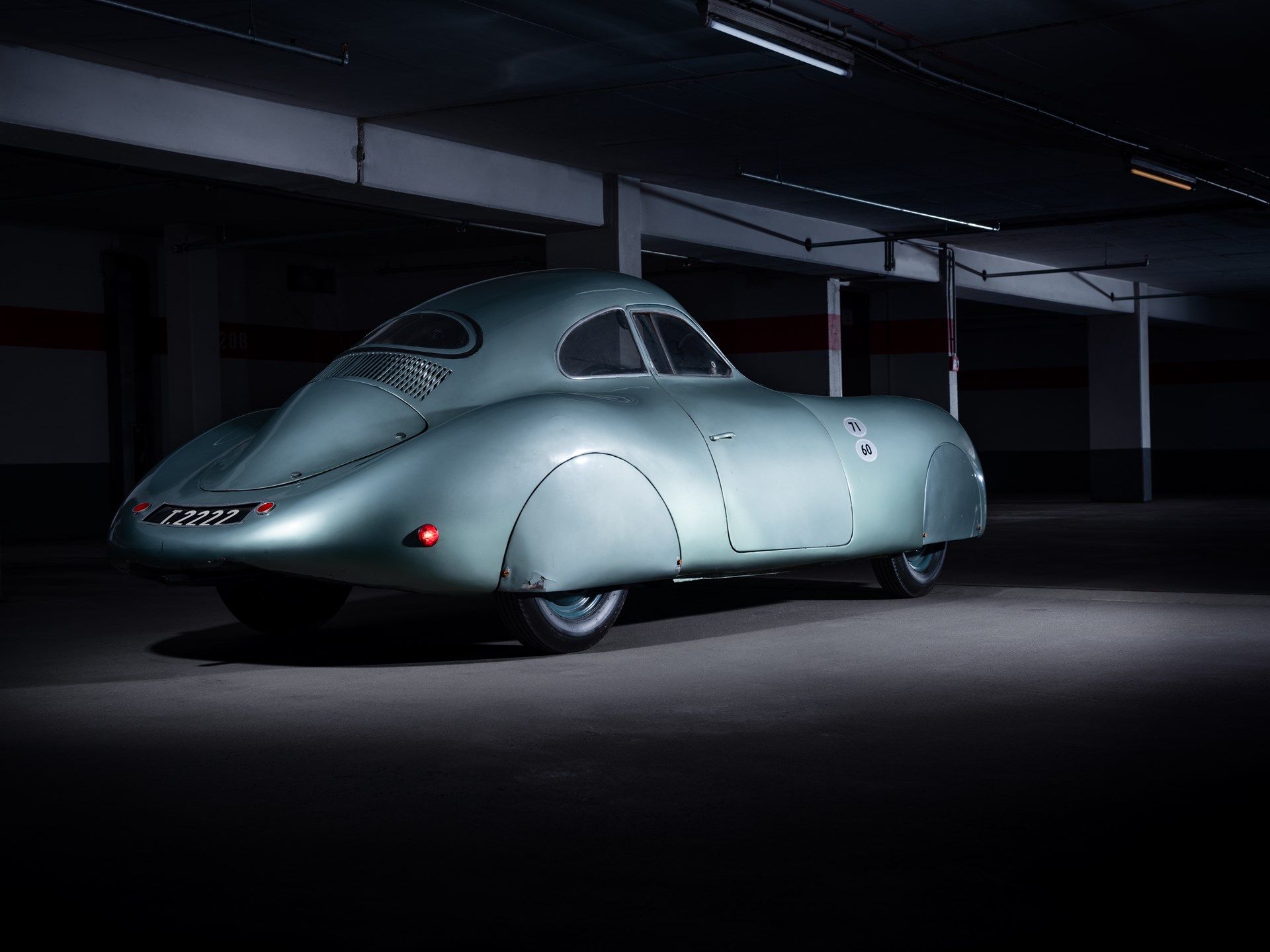When you think of the first Porsche, you probably have in mind the 1948 Porsche 356/1 also known as the "Porsche No. 1". Indeed, that was the first car to wear the Porsche badge, but you'd have to go back almost a decade to find the first Porsche-named car, and that is the streamlined vehicle that stands before your eyes now. It's called the Type 64, and three were built precisely 80 years ago of which two survive now, and only this one has the original sheet metal on it. Mechanically, it is a strengthened and tuned Beetle but, as far as looks are concerned, it has the 356's DNA written all over it. Now, it's up for auction, and if somebody other than the Porsche Museum buys it, I'll be shocked.
Porsche's crazy about its history. The German company has built its reputation via winning races - much like Ferrari has - and it can't stop reminding everyone about its landmark moments. There are multiple events dedicated to the history of Ferdinand Porsche's company, such us Luftghekult or the Rennsport Reunion. If you arrive in Stuttgart, the first thing you stumble across is the Porsche Platz, and there, on one side of the roundabout at the entrance of the city, there's a futuristic-looking building. That's Porsche's own museum that's filled to the brim with everything Porsche both new and old. But Porsche doesn't currently own this car, the Type 64 chassis #38/41. It was designed by Ferdinand Porsche as a marketing ploy to showcase that you can extract genuine performance from the unassuming platform of the Beetle. If Porsche wants it back, it'll have to join the crowd at the RM/Sotheby's auction in Monterey, California, that's scheduled for August 15th through to the 17th.
The 1939 Porsche Type 64 looks futuristic even today
Usually, if you want to buy a highly significant car from a company's history, you either have to scoop up an uncountable amount of money or, in some cases, you have to forget about it altogether. Want to but a genuine Mercedes-Benz 300 SLR 'Ulenhaut' Coupe? You can't. Mercedes-Benz owns both of them, and it's not about to sell you one no matter how much money you wave in its face. Want to buy the first Porsche 356? Porsche has it and, again, it won't sell it to you. But if you want the first Porsche you can actually put up or shut up.
The history behind the 1939 Porsche Type 64
Considered by many as the greatest car engineer of the 20th century, Ferdinand Porsche is the man behind many firsts (the first rear-engined, RWD car, the first mid-engined car, the first hybrid car, and many others in between) as well as the driving force of some of the most recognizable names in the automotive business: one of them is Volkswagen, and the other is the one he created when he realized no other car was quite up to his standards, and that's Porsche, of course.
In 1934, Porsche bagged the contract with the German Automobile Industry Association to design a cheap, economical, and practical car for the German people. The name of the car suggested its mass appeal as it was baptized 'Volkswagen.' Porsche won the job because he'd been actively working to develop a car like this for about three years by then.
All of these early creations were similar in design in that Porsche went away from the standard, boxy design of the day and, instead, proposed a streamlined body to improve fuel efficiency. Chrysler pulled a similar trick with the 1934 Airflow although work on aerodynamic designs had been ongoing for over a decade by that point.
In 1933, a year before officially getting the contract to build what would become the Beetle, Porsche met with Adolf Hitler himself to iron out the details of the new people's car. The leader of the National Socialist German Workers' Party wanted a car that could seat two adults in the front and two children in the back, proved sturdy enough to be in use year-round, offered 40 mpg without a hitch, and would feature an air-cooled engine since most Germans did not have a garage to store their cars in.
Porsche's team of consultants and engineers (Ferdinand had already established his own consultancy firm which is how he was able to work with a variety of big names in the business and was even offered the chance to mastermind Russia's engineering revival) got to work right away and, by 1935, the first running and driving had already been built at Porsche's own workshop near his villa in Stuttgart. Porsche's own son Ferry was tasked with test driving these early prototypes that were internally known as Porsche Type 60. The first batch of 30 near-production prototypes was built in 1937 in cooperation with Daimler AG and, in 1938, the renamed KdF Wagen was ready. KdF were the initials of Kraft durch Freude (Strength through Joy), a State-run leisure organization set up to showcase the advantages of the National Socialism.
Around that time, the idea of the Berlin-Rome rally emerged. It should've taken place on September the 27th 1938 under the guidance of the National Socialist Motor Corps, but it never happened due to rising tensions in Czechoslovakia as Germany was keen to annex to its territory the Sudetenland, a region of Czechoslovakia inhabited by a large number of German-speaking people. Two days after the rally should've taken place, a meeting in Munich, Germany, between representatives from Germany, Italy, France, and the U.K. took place which settled the ongoing crisis. Effectively, the Western powers allowed Germany to annex the region, ignoring Czechoslovakia's sovereignty - although it all came about as a proposal from Italy's Mussolini.
In spite of all the turmoil, the Berlin-Rome rally wasn't ditched for good, and it was rescheduled for 1939. KdF was keen to take part in motorsport-related activities (as evidenced by the fact that the organization had previously bought from Porsche the plans for a V-10-engined race car commonly referred to as the Porsche F-Wagen (Porsche Type 114). Renamed the KdF R-Wagen (also known as the Porsche Type 116), it was supposed to sport a 1.5-liter engine mounted behind the cockpit, like in the case of the Auto Union P-Wagen also designed by Ferdinand Porsche.
It used the underpinnings of the KdF Wagen with parts from Porsche's Type 114 project. The body design name was Type 60 K10 which referred to the fact that the design of the body was the 10th to be mounted on the Type 60 chassis. As the cars used 1938 KdF chassis, the chassis numbers started with 38. Three examples, all slightly different in appearance, were built (chassis #38/41, #38/42, and #38/43) after Ferdinand Porsche arranged with Major Adolf Huehnlein (the head of the ONS, the organization responsible for overseeing motorsport-related activity in Germany) that the race would make use of Germany's highways.
With this detail in place, the work began on the body. It had to be streamlined since the engine was barely modified: the 1.1-liter (or, according to other sources, just 1.0-liter), air-cooled, flat-four put out no more than 40 horsepower on a good day. Designed by Erwin Komenda, the cars were to be equipped with two spare tires in a cargo compartment in the front, as laid out by Karl Froehlich. This meant that the fuel tank had to be moved which, in turn, saw the cabin shrink in size as the seat was moved further towards the middle of the car (that's why the car has the narrow bubble look to it).
In fact, the final pre-War race was the 1939 Belgrade Grand Prix, the highlight of which was the GP race that took place on September 3rd of that year. What's amazing is that, by then, both the Hungarian and the French teams had withdrawn, but the German Mercedes-Benz and Auto-Union decided to keep going regardless of what was going on in Poland. Only the five 'Silver Arrows' took part in the race around the Kalemegdan Park in the Yugoslavian capital.
Now, going back to the Porsche Type 64 from another historical interlude, you may be wondering what happened to the cars since the race did not take place. Well, all three did get built (the second in December of 1939 and the third in 1940) and lived very interesting lives thereafter. The first example was gifted to Bodo Lafferentz, "a member not only of Germany’s national trade union, but he was also a board member of the newly formed Volkswagenwerk," according to Porsche Road & Race. Lafferentz crashed the car, but the car was salvaged and repaired although, during the years of WWII, the body of the third car built sat on the chassis of Lafferentz's car for reasons unknown. This third car was used by Ferdinand Porsche himself while the second car saw action as an experimental vehicle.
During the war period, the second and third chassis were saved by Porsche as he fled to Gmund, Austria where he set up an impromptu headquarters at a villa in Zell-Am-See. As Americans arrived to liberate Austria, the appearance of one of the Type 64s, namely chassis #38/42, was intriguing enough to prompt them to seize it. They drove around in it for a while before chopping the roof off and driving it some more until the engine let go. At that point, the car was scrapped although some parts that were salvaged such as the front axle, much of the chassis but almost nobody parts.
RM/Sotheby's is selling this third car
As mentioned because there was a chassis/body swap that happened after Lafferentz crashed chassis #38/41, the third car ended up being a hybrid. That's why, now, RM/Sotheby's is selling a car with the serial number of the first Type 64 built and the engine ID of the third car built. But, for what it's worth, it's a highly original car. Mathe bought it in 1949 and did not intend to baby it at all. A former motorcycle racer (before a crash in 1934 rendered his right hand paralyzed), Mathe converted the car to right-hand-drive so he can drive it with his left hand. He also equipped it with more modern hydraulic brakes (it originally came with cable-actuated brakes).
“Otto Mathe, was one of the first, if not the very first driver, to use Porsche products for racing,” said Oliver Schmidt of the Prototype Museum in Hamburg, quoted by Porsche Road & Race. The Prototype Museum was the car's de facto home for years, but it probably will no longer be after the sale. "Between 1949 and 1953, Mathé competed with the Porsche in around eighteen different events including the Coppa Dolomiti in Northern Italy, Österreichische Alpenfahrt, Stella Alpina, Straßenrennen Meran and Korneuburg, Krems, Linz, Gmünd, Innsbruck, Eifelrennen, as well as several circuit races." In 1950, Mathe won in his class in the Austrian Alpine Rally.
It is now sold by Schoerghuber as the most important piece of Porsche history that's not owned by Porsche. You see, the polished hovering Type 64 in the Porsche Museum is a replica with an aluminum body made by a well-known bodywork specialist, Karosseriebau Drescher. That car doesn't have any of the parts salvaged from chassis #38/42 as those went into the recreation commissioned by the Prototype Museum in Hamburg.
“The story about rebuilding car number 2 starts for us when we had problems with the gearbox of the Fetzenflieger (the third car)," said Oliver Schmidt, quoted by Porsche Road & Race. "When we took the gearbox out we saw the number ‘38/42’ on it, and at first we didn’t know what it was, but later we found out that this was the number of the second Berlin-Rome car. And then we found more parts stamped with ‘38/42’ and finally we also found the almost complete chassis and the front axle. One of the door handles we found in a box full of aluminum ski bindings, and so we also had many other parts for the car, but not the body." Nostalgicar of Neuss, Germany, built a brand-new aluminum body that was placed on the salvaged chassis and everything else that was saved (and was taken by Mathe) was mounted on this rebuilt car. The car is painted black with black headlight covers as it would've had during the war.
I'm certain that the ex-Mathe Porsche Type 64 (With its black Tyrolean numberplates and all the rust and dents in the right places) will sell for a lot of money since it's the most original example out there while taking into consideration that it also has components from the first chassis built.
Further reading
Read our full review on the 1948-1965 Porsche 356.
Ultra Rare Porsche 356 Prototype for sale
Read our full review on the 1938 Porsche Typ 64

